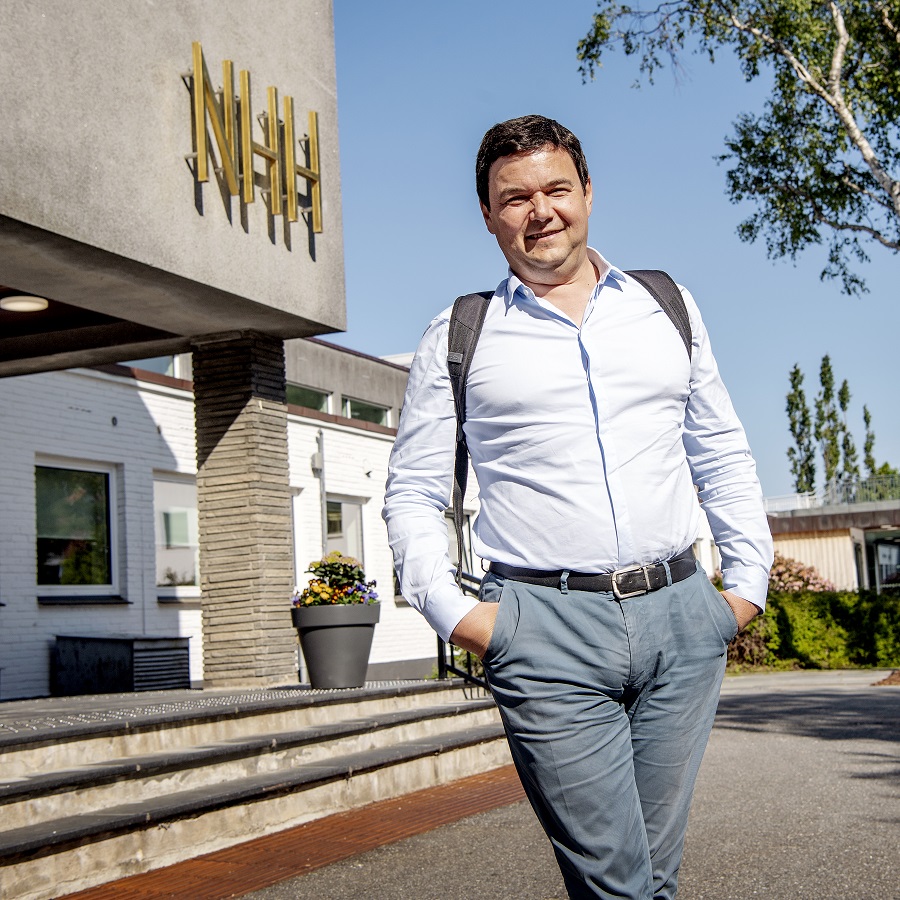
Expert group: Child benefit should be increased and taxed
Over 11 per cent of Norwegian children grow up in poor families. ‘We need to increase child benefit. That would halve the proportion of children living in poverty,’ says NHH professor Kjell G. Salvanes.
This week, the Minister of Children and Families Kjersti Toppe received the report ‘A childhood for life: increased belonging, mastery and learning for children in poor families’ (in Norwegian only).
‘Increased child benefit is essential to improving these children’s living conditions. In the short term, this is the most significant factor in terms of tackling low income among families with children.’
That is according to Kjell G. Salvanes, a member of the Expert Group for Children in Poor Families, a professor at the Department of Economics, and a researcher at the Centre for Experimental Research on Fairness, Inequality and Rationality (FAIR).

Inherited poverty and living conditions
The expert group has assessed and prioritised different measures aimed at children growing up in poor families. They have worked with two questions in mind: How can Norway improve children's living conditions and quality of life; and what can we do to prevent poverty from being passed on from generation to generation?
In other words: How can children in poor families be given the same opportunities for development, learning and good health as other children?
The expert group believes that one way to prevent poverty being passed down generations is to ensure increased participation in kindergarten.
Kindergarten must be prioritised
‘Kindergarten is one of the most effective measures to prevent poverty being passed on to new generations. The research is quite clear in this respect. It increases opportunities for children in poor families and has a huge positive impact on later mastery at school and in the workplace,’ says the NHH professor.
The group proposes a model that includes the right for children to attend kindergarten from the month they turn one year old, an automatic offer of a place at kindergarten, and universal free core hours.
Oslo and its districts
In Norway, over 11 per cent of children grow up in poor families.
persistently low incomes
Children in poor families grow up in households with persistently low incomes, meaning that the household has an average income (after tax) of less than 60 per cent of the median income in Norway over the past three years.
An example of a persistently low income would be a single parent with one child who has an annual income of NOK 327,000 or less over a minimum of three years.
The proportion of children in poor families is higher among children with immigrant backgrounds. The proportion in Oslo is 16.4 per cent, but there are major differences between city districts. Several districts in the west of Oslo are at four to five per cent. In other districts, the reality is quite different:
- Nedre Tøyen sub-city district: 65 per cent
- Grønland: 56 per cent
- Enerhaugen: 46 per cent
‘On average, these children have worse conditions for growing up than other children. They participate less in recreational activities, report poorer relationships with fellow pupils and teachers, and experience less mastery at school,’ the NHH professor explains.
Increase child benefit to NOK 31,535
In the report, the group concludes that two main steps that must be prioritised in order to improve the situation for children in poor families in the short and long term.
‘Increasing child benefit would improve living conditions immediately.’
They recommend that child benefit is increased to NOK 31,535 per year for all children, that child benefit is taxed, and that parental allowance is abolished. They believe that child benefit should be adjusted in line with inflation.
‘The net effect will be positive for most families, except for the 30 per cent with the highest incomes. This measure could reduce the proportion of children growing up in families with persistently low incomes from 11 to 6 per cent,’ Salvanes explains.
As the expert group points out, such an increase would be costly.
‘In order to increase child benefit within reasonable cost limits, we argue that child benefit should be taxed. This way, all families would still receive child benefit, but the families with the lowest incomes would receive the most.’

Avoids the poverty trap
‘You extensively discuss lock-in effects. Why is that?’
‘The poverty trap, or lock-in effect, can have very detrimental effects. It happens when people receiving social security can see that there is no financial benefit to working or increasing the number of hours they work. An example of this is when a social security recipient receives less housing benefit because they work more and their taxable income increases. Then the situation for poor families does not change,’ says Salvanes, and adds:
‘Child benefit does not create poverty traps.’